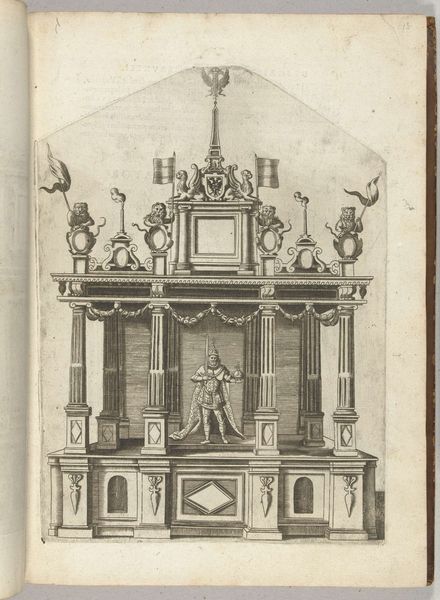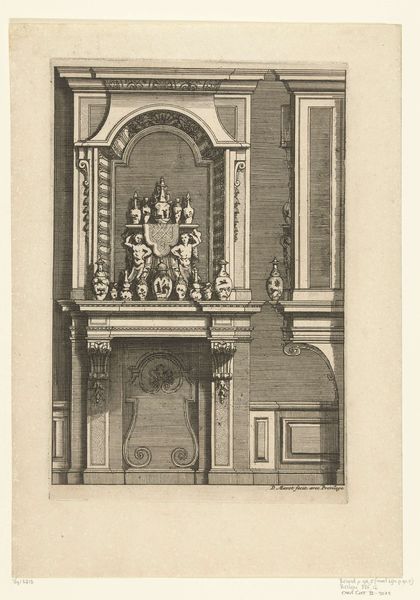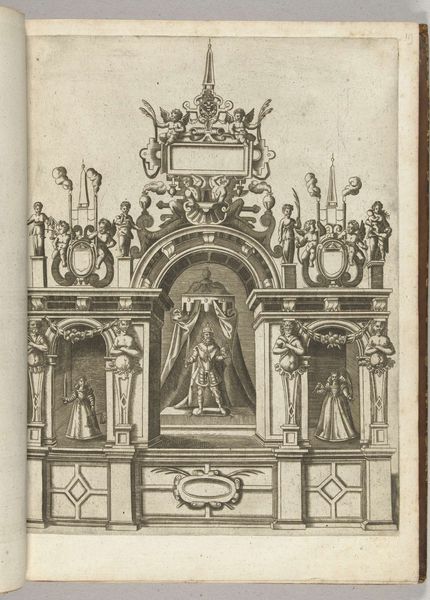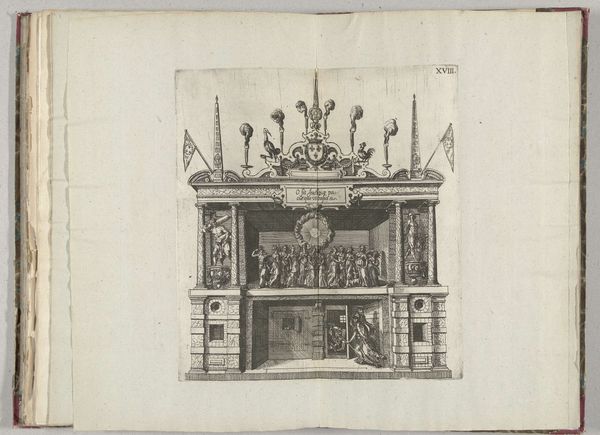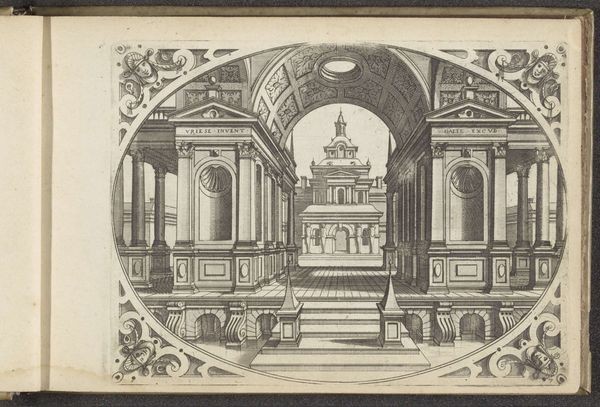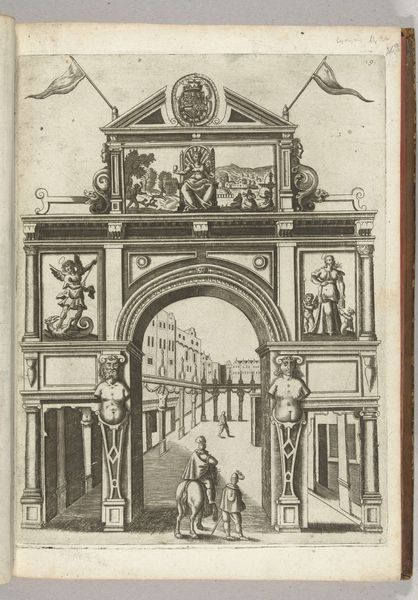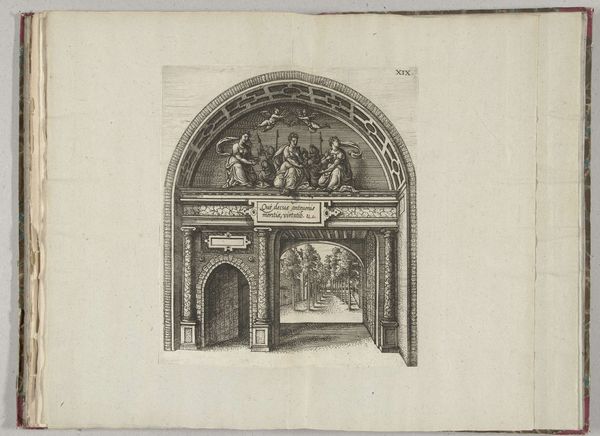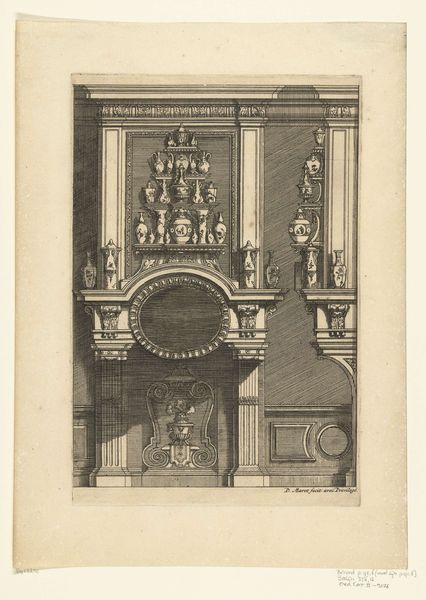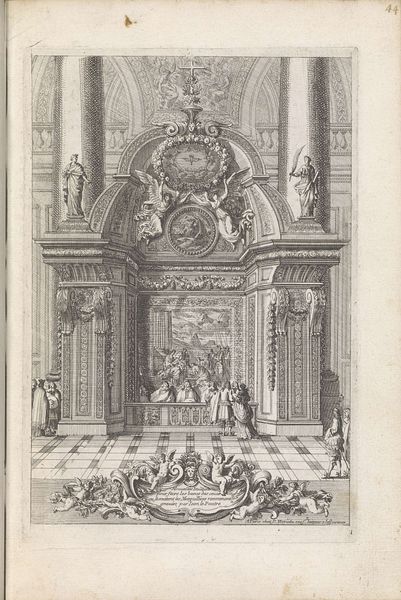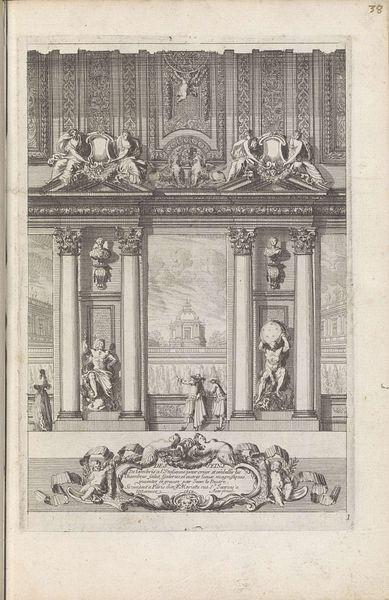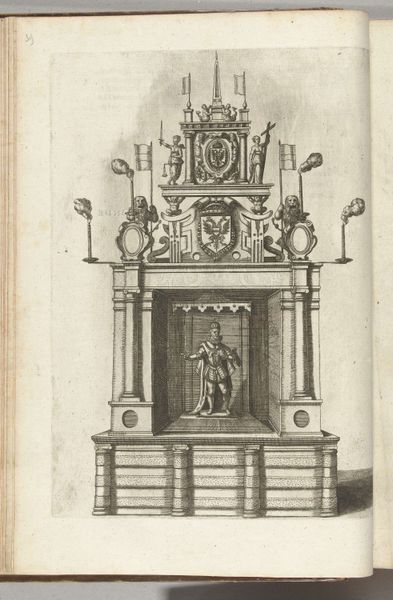
drawing, print, pen, engraving
#
drawing
#
allegory
#
narrative-art
# print
#
figuration
#
form
#
11_renaissance
#
line
#
pen
#
history-painting
#
academic-art
#
italian-renaissance
#
engraving
Dimensions: height 224 mm, width 310 mm
Copyright: Rijks Museum: Open Domain
Editor: This is a drawing called "Toneel met deugden en ondeugden," or "Stage with Virtues and Vices," made in 1594 by an anonymous artist. It's a pen and ink engraving from the Rijksmuseum collection. I notice the stage-like setting and wonder what sort of performance this depicts. What do you see in this piece? Curator: This engraving operates on many levels. On one, it seems to be a simple allegory between the virtues and vices, with figures representing each. However, I read these allegorical representations through a lens that interrogates the power dynamics and social constructs that would have been relevant during the Renaissance. What kind of authority do you imagine virtues or vices carried during the era in which this work was created? Editor: I see the king enthroned as representing virtue, and his scale emphasizes his dominance. The others are obviously immoral actors engaged in a conflict before him, the theater set-up and boxes giving these 'actors' and audience, an inescapable public display, as opposed to an introspective moment for moral choice. Curator: Precisely. So, considering this public display of morality, how might the representation of "virtue" as a regal, judging figure reinforce or challenge the existing social hierarchy? Consider who benefitted from that established order. The representation and dissemination of an idealized image of social harmony would definitely play into this, yes? How might that idealized vision silence other narratives, those that lay outside a dominant, masculine narrative? Editor: I hadn't thought about who the drawing may be trying to silence. Now I wonder about the social commentary implied here, more than the religious commentary of good vs. evil. It seems this seemingly simple depiction of virtues and vices actually opens up a larger discourse about power, society, and control during the Renaissance. Curator: Exactly. This image invites a deep intersectional investigation into the construction of moral and societal norms.
Comments
No comments
Be the first to comment and join the conversation on the ultimate creative platform.
